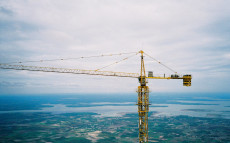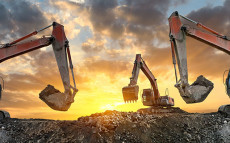- pathfindersAI
- Job Profile
Hoist and Winch Operators
Summary
Hoist and Winch Operators: Guardians of Load Management
What They Do
In the symphony of industrial operations, Hoist and Winch Operators play the crucial role of conductors, orchestrating the precise movement of loads that ensure the smooth performance of various sectors. These professionals are responsible for operating the hoists and winches that lift and move materials, equipment, or other large objects. Whether in construction sites, manufacturing plants, or maritime settings, their presence is pivotal for the safety and efficiency of operations. By managing the levers, pedals, and switches of hoisting machinery, they bring critical materials to just the right place at just the right time.
Job Responsibilities
Hoist and Winch Operators must adhere to a suite of responsibilities integral to maintaining the rhythm of the work site or facility. Their duties include but are not limited to, setting up and inspecting hoisting equipment to ensure it's in perfect working order, coordinating with team members to tackle complex lifting tasks, and meticulously logging operational data. They must monitor the load’s balance and adherence to safety protocols, ensuring every lift is executed flawlessly. Moreover, operators are expected to conduct routine maintenance of the equipment, addressing wear and tear before they escalate into significant issues. These tasks demand a keen eye for detail and an unwavering commitment to safety protocols.
Essential Skills
To excel as a Hoist and Winch Operator, an individual must possess a blend of technical aptitude and soft skills. Precision and attentiveness are paramount; the ability to diagnose and troubleshoot mechanical problems swiftly ensures minimal disruption to operations. Good hand-eye coordination and spatial awareness are essential, allowing operators to maneuver loads with finesse. Furthermore, effective communication and teamwork skills enable seamless cooperation with other site workers. Physical stamina is also necessary to withstand the demands of lifting operations and long hours on one’s feet. With safety as the undercurrent of their role, an in-depth understanding of safety regulations and procedures forms the bedrock of their skill set.
Educational Pathways
Embarking on a career as a Hoist and Winch Operator typically necessitates a high school diploma or GED, often accompanied by on-the-job training. Many employers offer comprehensive training programs where novices can learn the ropes under the tutelage of experienced operators. For those seeking a competitive edge, vocational programs and certifications in crane operation or rigging can be invaluable. These specialized courses provided by technical institutions not only offer foundational knowledge but also grant hands-on experience with industry-standard equipment. Additionally, obtaining certifications from recognized bodies such as the National Commission for the Certification of Crane Operators (NCCCO) can significantly enhance employability prospects.
Career Prospects
The demand for proficient Hoist and Winch Operators remains steady, driven by continuous growth in construction, manufacturing, and logistics industries. As infrastructure projects and industrial activities expand, the need for skilled operators is expected to follow suit. Advancement opportunities are robust for those wishing to elevate their careers; experienced operators can transition into supervisory roles, safety inspectors, or equipment trainers. For those with entrepreneurial aspirations, establishing a niche service business in hoisting operations or machinery maintenance is also a tangible pathway. The career offers both job stability and the potential for professional growth, making it a viable and rewarding choice for mechanically inclined individuals.
Conclusion
Hoist and Winch Operators are the unsung heroes of various industrial and construction landscapes, ensuring the meticulous movement of critical loads. Their role is underscored by a suite of responsibilities demanding technical acumen, coordination, and a steadfast commitment to safety. With accessible educational pathways and promising career prospects, this vocation stands as a testament to the indispensable nature of skilled trades in bolstering industry and infrastructure. For those who thrive in hands-on, mechanically driven environments, becoming a Hoist and Winch Operator offers a fulfilling and dynamic career dedicated to lifting — both in the literal and figurative sense.
Video
Compensation
| State | Median Salary | Median Hourly | Positions |
|---|---|---|---|
| AL | 58,570 | 28.16 | 60 |
| AK | 50,610 | 24.33 | 50 |
| CO | 53,010 | 25.48 | 30 |
| FL | 40,180 | 19.32 | 30 |
| GA | 49,350 | 23.72 | 80 |
| HI | 98,580 | 47.40 | 170 |
| ID | 48,440 | 23.29 | 60 |
| IL | 111,470 | 53.59 | 280 |
| KY | 16,640 | 8.00 | 40 |
| MD | 79,640 | 38.29 | 90 |
| MI | 37,680 | 18.11 | 50 |
| MN | 101,380 | 48.74 | 100 |
| MS | * | * | 40 |
| MO | 37,110 | 17.84 | 50 |
| NJ | 42,910 | 20.63 | 30 |
| NY | 114,880 | 55.23 | 160 |
| NC | 26,670 | 12.82 | 70 |
| OR | 54,070 | 26.00 | 80 |
| TN | 39,400 | 18.94 | 60 |
| TX | 40,790 | 19.61 | 100 |
| WA | 45,770 | 22.01 | 150 |
| WV | 63,010 | 30.30 | 80 |
Similar Occupations
In this area you will find other occupations that are close to the one you were viewing in tasks, knowledge and work environment. If the primary job profile you are viewing isn't quite to your liking, take a look around and see what else is available.
Basic and Premium Accounts have more alternative occupations available than the Free account.

Crane and Tower Operators - 53-7021.00
Crane and Tower Operators are responsible for controlling and maneuvering cranes and tower equipment to lift, move, and position heavy materials and objects at construction sites, docks, and industrial facilities. They ensure safety protocols are followed while coordinating with ground crews to execute precision tasks efficiently and accurately.
-
$64,690/yr
Median Pay -
42,260
Number of Jobs

Excavating and Loading Machine and Dragline Operators, Surface Mining - 47-5022.00
Excavating and Loading Machine and Dragline Operators in surface mining operate heavy machinery to remove overburden, extract minerals, or load materials onto transport vehicles. They ensure efficient operation and maintenance of the equipment while adhering to safety protocols and environmental regulations.
-
$50,050/yr
Median Pay -
32,630
Number of Jobs